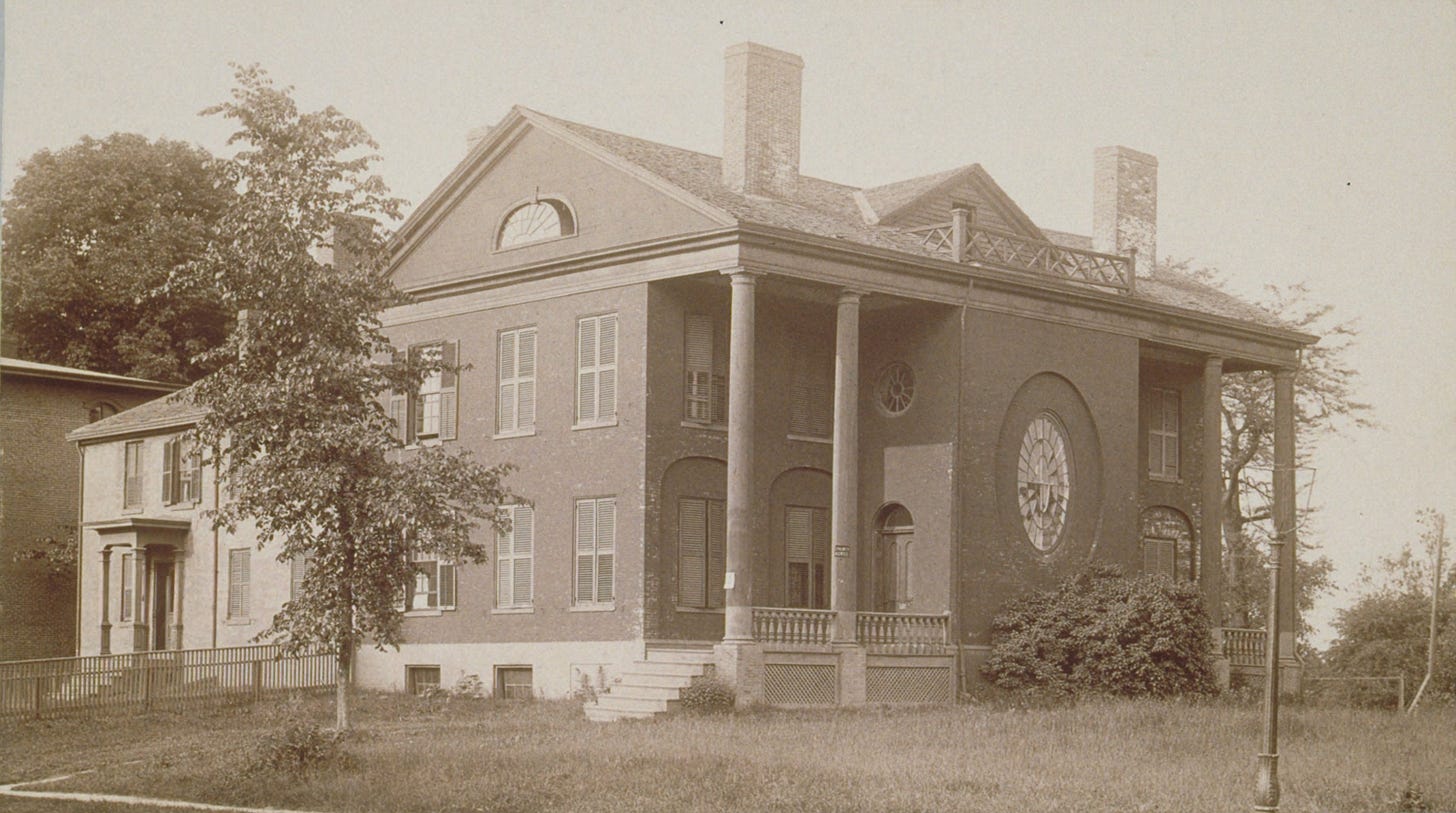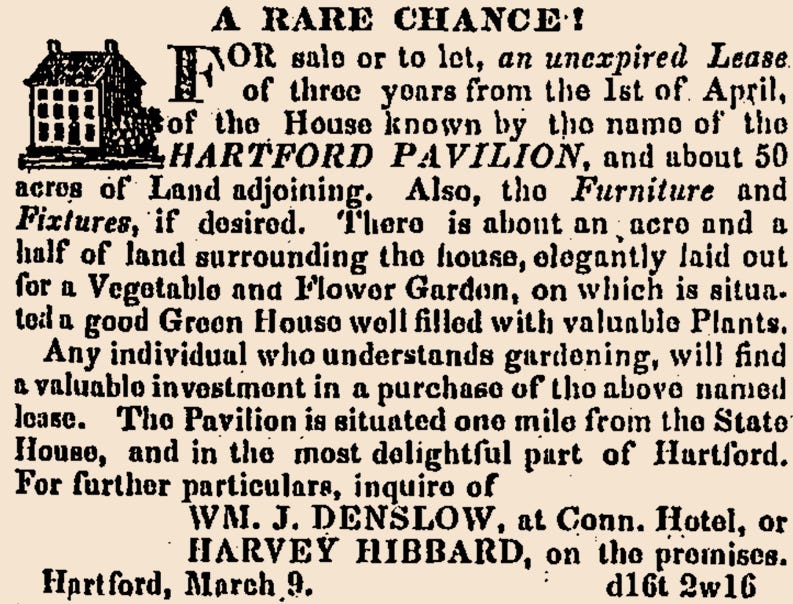The Lost Pavilion House School
This Lost Mansion Went from Being a Billiard Resort to a Family School
In my most recent video on YouTube, I go through fifteen mansions (and a few additional houses as well!) that once stood in Hartford. Of course, these were only a few of the many that once existed in the city. One impressive structure that was not featured in the video was known as the Pavilion House. It was an impressive Federal-style building with a large, two-story extension on its front facade that was dominated by a huge circular window. The extension was flanked by columned porches on either side. The house stood on a site that’s now a parking lot on Wooster Street, just off of Pavilion Street in the Clay Arsenal neighborhood. In fact, it was just a block from the old Connecticut State Arsenal that gave the neighborhood its name. Over the years, the house served as a residence, a billiard resort, and a family school.
According to a note written on the back of an 1897 photograph of the house in the collections of the Connecticut Museum of Culture and History, the Pavilion House was built about 1798 by Ichabod Lord Skinner. As related in an account of his life, published shortly after his death in the Hartford Courant on February 3, 1852, Skinner did not come to Hartford until about 1807-8, so either he built the house sometime after he arrived, or he moved into an already existing house built almost a decade earlier.
Skinner had an interesting dual career. Born in Colchester, CT in 1767, he graduated from Yale in 1793 and then studied theology with the famous minister Jonathan Edwards. After serving for a number of years as the pastor of the Congregational Church in North Coventry, CT, he studied law and then settled in Hartford, where he practiced his new profession. In 1813, the state purchased the land for the new arsenal from Skinner for $125. Skinner later moved to Washington, D.C. and passed away at the age of 84 in Brooklyn, NY.
By 1835, the house was being operated by Harvey Hibbard as a billiard resort called the Hartford Pavilion. Three years later, Hibbard and William J. Denslow were advertising the property for sale or lease. It was soon acquired by David Watkinson, the English-born merchant and philanthropist whose bequests led to the creation of the Watkinson Library at Trinity College and the Watkinson School. It was Watkinson who laid out Pavilion Street in the 1850s.

From about 1846 until 1869, the property was used as the Pavilion Family School, operated by Rev. Isaac Bird, a Yale and Andover Theological Seminary graduate and missionary who had spent 13 years in Beirut (in an 1862 letter, now at the Library of Congress, he thanked author Theodore Dwight for the receipt of Arabic manuscripts). Bird was assisted by his son James, who graduated from Yale in 1848, and other family members in running the school. There is a watercolor of the school, painted in about 1861 by Rev. Henry J. Van Lennep, whose third wife, Emily Ann, was Isaac Bird’s daughter. Like Bird, Van Lennep was a minister, missionary and educator. He spent many years in the Ottoman Empire and his sketches from his travels appeared in a number of published works, including The Oriental Album, printed in 1862.

Although I can’t find a description of the layout of the school, it seems that the Bird family resided in the house itself and that the school classes were held in a separate structure (a pavilion?) in the rear. This is suggested by Smith’s 1855 Map of Hartford County, which shows the house as the residence of I. & J. Bird and shows the Pavilion School as being just to the north, behind the house.
The Hartford Courant reported on April 16, 1869:
The many friends of Messrs. I. and J. Bird will regret that they have decided to leave the city for a new home in another state. For many years their “Pavilion School,” on the Watkinson property, in the north part of the city, has been regarded as one of the best private schools in this vicinity, and the Messrs. Bird and their families have been held in high esteem here. They have recently purchased the “Sedgwick Institute” in Great Barrington, Mass., and will remove to that place immediately.

After the Birds departed, the Pavilion Property was purchased by John McGoodin and Edwin Crosby and later passed to other owners. The house’s west side was along Wooster Street (which was first opened in 1862) and its front facade faced south towards Pavilion Street across a lawn. The current building on the corner, at 114 Wooster Street, was erected in 1897 right in front of the Pavilion House, where the lawn had been. In 1914, an apartment building was erected at 124 Wooster Street, where the Pavilion House’s long rear ell had once stood. Hemmed in behind and in front, the Pavilion House was still there in the Sanborn Atlas of 1917, but by the time the 1920 edition was published, the house had been demolished. With its passing, the city lost both an elegant example of Federal-style architecture and a landmark of its educational history.





